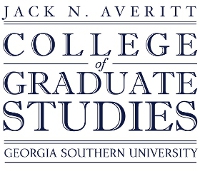Term of Award
Summer 2023
Degree Name
Master of Science, Mechanical Engineering
Document Type and Release Option
Thesis (open access)
Copyright Statement / License for Reuse

This work is licensed under a Creative Commons Attribution 4.0 License.
Department
Department of Mechanical Engineering
Committee Chair
Sevki Cesmeci
Committee Member 1
Kamran Kardel
Committee Member 2
Mohammadamin Ezazi
Abstract
Magnetorheological elastomers, or MREs, are smart composite materials with controllable physical and mechanical properties when introduced to an external stimulus of a magnetic field. The controllability of these properties is highly tunable by the selection of the elastomeric matrix, concentration of magnetically permeable particles, introduction of additives, and the alignment of the constituents during the curing process. The fabrication of MREs typically calls for a mold that is filled with an MRE mixture to create the final desired geometry after curing. These molds are frequently placed under a magnetic field which orients the micron sized magnetic particles along the magnetic flux lines that are passing through the MRE to create chain like structures that increase the MR effect. The molding process conducted in this study was able to align the iron particles at 50 wt.% meaning it would certainly reach the magnetic saturation point (0.5 Tesla) across any MRE mixture containing a higher iron particle content. The other form of fabrication method considered was stereolithography additive manufacturing, or SLA. This process underwent trials with four different printers with many different parameters adjusted. However, rapid sedimentation of the iron particles in the resin tank was an ever-present issue that led to the particles covering the film at the bottom of the resin tank preventing the passage of the UV light to properly set the matrix around the particles for a successful print. To solve this issue, it was decided that the particles needed to be mixed as well as have an increase in buoyancy. To accomplish this a Stöber process to add a silica coating to the iron particles was planned, and a mixer was repurposed to fit on to an SLA printer. The two fabrication methods then had PDMS matrices selected to aid in the comparison of the of the two methods by increasing the similarity of the samples created. A plan of testing was also designed along with a DMA insert that would apply the magnetic field to the samples during testing.
OCLC Number
1411250264
Catalog Permalink
https://galileo-georgiasouthern.primo.exlibrisgroup.com/permalink/01GALI_GASOUTH/1r4bu70/alma9916565849302950
Recommended Citation
Robbins, Austin S., "Investigation of Manufacturing Techniques for Magnetorheological Elastomers to Expand Feasibility in a Diverse Array of Applications" (2023). Electronic Theses and Dissertations. 2635.
https://digitalcommons.georgiasouthern.edu/etd/2635
Research Data and Supplementary Material
No


